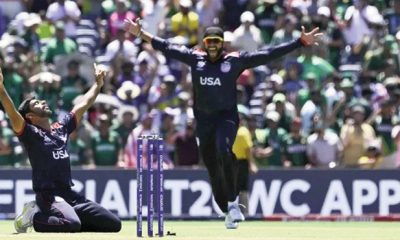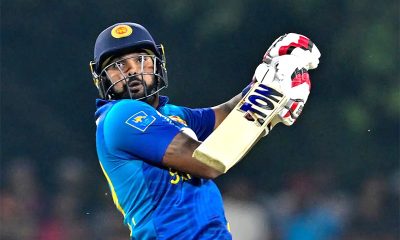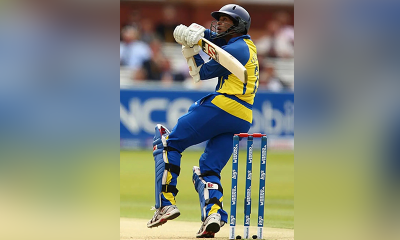Sports
Wanindu Hasaranga conundrum
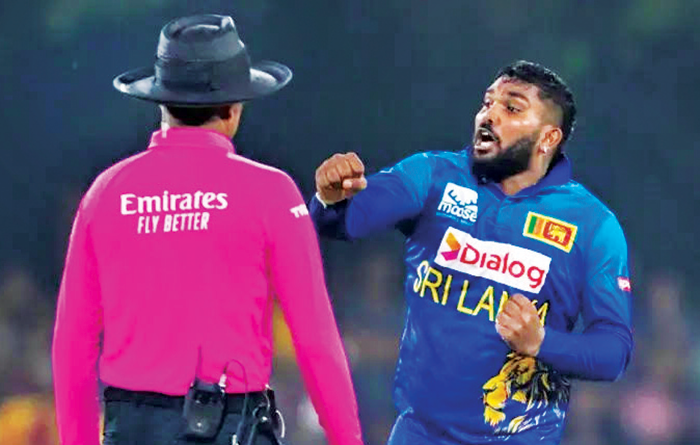
by Rex Clementine
When your star player gets suspended twice within a month, that’s not ideal. When he is your captain, you have serious problems to deal with. We are talking about Wanindu Hasaranga here, whose constant altercations with match officials have landed him in trouble.
First he took on local umpire Lyndon Hannibal for not calling a high full toss no ball in the third T-20 International against Afghanistan. He was charged for dissent, pleaded guilty and was suspended for two games. That resulted in him being left out for the first two T-20 Internationals and Charith Asalanka debuted as captain in Bangladesh. He proved to be a level-headed leader. A need of the hour.
Then in the third ODI against Bangladesh before he was carted all over the park, he got into another altercation with Bangladeshi umpire Tanvir Ahmed. This time the umpire had turned down a leg before shout. The Sri Lankans reviewed and it was an umpire’s call.
The Sri Lankans felt Rishad Hossain had been let off. Rightly so. They had all the reasons to be upset with the decision for Rishad turned the game on its head smashing 48 off 18 balls. Not only did the game slip away from Sri Lanka but they lost the series too.
You do feel for Hasaranga and the Sri Lankans. Umpire Richard Kettleborough was unwell which meant that local umpire Tanvir Ahmed had to replace him. A few decisions had cost the Sri Lankans dearly that night. Pathum Nissanka had been given out wrongly. A decision the batsman did not review.
Bangladesh coach Chandika Hathurusinghe may have used the playing conditions to his side’s advantage when he applied for concussion substitute and the appeal for Soumya Sarkar to be replaced by Tanzid Hasan was granted.
So how did Hathurusingha asking for concussion substitute help Bangladesh? Well, it was a hot day in Chittagong and Sarkar had fielded for 49 overs when Sri Lanka were batting. Fatigue could have got the better of him when it was Bangladesh’s chance to chase. Tanzid meanwhile was fresh and top scored during the run chase with 84 runs.
Sri Lanka were bemused. How can you apply for concussion substitute for injury not related to the head?
Sri Lanka had quite a few axes to grind with the way things were going for them during the series. But does that mean that Hasaranga is allowed to behave the way he did?
Apparently, the player used the four-letter word at the umpire. The umpire too responded with a jibe. He made matters worse for the Sri Lankans by charging the player for dissent after the game. Hathurusinghe, allegedly, told the local umpires to charge the bowler.
These teams will meet each other during the T-20 World Cup and Bangladesh wouldn’t want to play against Hasaranga.
The moment Hasaranga pleaded guilty, he was staring down the barrel facing a suspension of four white ball games as it was his second suspension.
The night he was charged, the Test squad was named and Hasaranga was in it. This fueled speculation that Hasaranga was drafted into the Test squad in order to help him to serve the ban during the Test series. Sitting out a Test match is equal to two white ball games and when Wanindu misses out both Tests, he has served his suspension and will be fully available for the World Cup.
Some have claimed that this was a clever move by the team management. Some have criticized the move saying that loopholes in the system had been exploited. However, the fact remains that Hasaranga had written to SLC CEO Ashley de Silva making himself available for selection in Test cricket long before he got into trouble in Chittagong. He had last year retired from Tests after being overlooked for the longer format of the game by the previous selectors on numerous occasions. New selectors and change of heart from Hasaranga.
Interestingly, Hasaranga had not played a First-Class game for more than a year now. Whether the selectors would have named him in the squad soon after he came out of retirement in normal circumstances is a question for debate.
However, what is not in debate is successive Sri Lankan teams exploiting the escape clauses to their benefit.
There was the famous captaincy switch in 2012 during the World T-20. Captain Mahela Jayawardene was facing suspension for slow over rate and Sri Lanka introduced Kumar Sangakkara as captain saving MJ from a suspension for the knockouts.
Eventually, the ICC had to alter playing conditions after the incident. Hasaranga incident also will make them to sit down and chat.
What is not acceptable though is you doing all these stuff conveniently and suddenly waking up from a slumber and accusing others for trying to take advantage of the system or existing laws those have inadequacies. Suddenly, the Sri Lankans become the guardians of Spirit of Cricket.
If you exploit the system, you’ll find others following suit too. At that point you should not be shedding crocodile tears pleading for fair play. That’s where Sri Lanka have got things horribly wrong. They have failed to take things on the chin and move on.
As for Hasaranga, he is a champion player. He has won Sri Lanka a lot of games single-handedly and he’s going to do the same moving forward. But he needs to calm down. His constant run-ins with match officials is unacceptable. Sri Lanka do not want a situation where their best player is sitting out of important games due to discipline issues.
Here’s the other point. He has become a bit of a troublemaker taking on the umpires but is he going to take other authorities too to task. You certainly do not want a situation where he is constantly berating selectors, coaching staff, administration and even own teammates. This is an opportunity for people to nip things in the bud and not let things get out of hand.
Your best player doesn’t need to be your captain always. Lasith Malinga was an outstanding bowler but was a lousy captain. Sachin Tendulkar is the greatest batsman this generation has seen, but his two stints as captain of India weren’t so great. Similarly, Brian Lara, was a class act with the bat but hopeless as a captain.
Hasaranga is certainly Sri Lanka’s biggest star at the moment in white ball cricket. But is he your best choice as captain? Yes, he won the Lanka Premier League last year and not many people gave his side a chance. But should that have been the only reason to hand him the T-20 captaincy? Hadn’t we groomed Charith Asalanka from a young age for captaincy? These are some of the questions that need to be answered.
Sports
England face Australia in the battle of champions
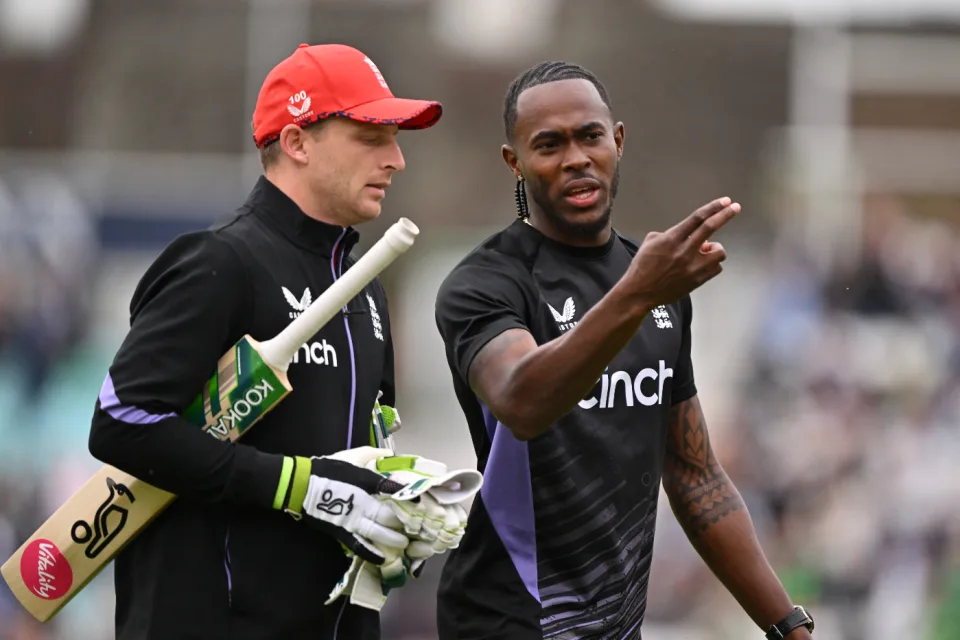
The first truly heavyweight clash of this expanded T20 World Cup format comes freighted with both history and subplots. A rematch of the 2010 World T20 final at Kensington Oval, the match pits Jos Buttler’s defending champions – who are aiming to become the first team to retain the trophy – against the Australian winning machine, victors at the 2021 edition and current world title-holders in Test and ODI cricket. And that’s before you throw in the Ashes for afters.
Already there is added pressure on England, after the rain in Bridgetown led to a share of the points in their opener against Scotland (and that having conceded 90 runs from 10 overs without taking a wicket in a tepid bowling display). Lose to their oldest rivals and it will leave their Super 8 prospects open to being waylaid by the perils of net run-rate calculations, or worse.
The Scotland match was the third abandonment in five suffered by England, after a rain-affected home series against Pakistan, which has clearly hampered their readiness for this campaign after almost six months without playing T20 together. It does not take much for a side to click in this format – and England looked in decent shape when they did get on the field against Pakistan – but Buttler will be anxious for things to go their way on Saturday, if only to avoid further questions referencing the team’s disastrous ODI World Cup defence last year.
Australia, under the laidback leadership of Mitchell Marsh would love nothing more than to add to the English sense of jeopardy – having helped bundle them out of the tournament in India on the way to taking the crown. Their head to head record is less impressive in T20 however, with England having won six of the last seven completed encounters, as well as that 2010 final.
Despite a wobble with the bat, Australia avoided mishap against Oman earlier in the week, the experience of David Warner and Marcus Stoinis shining through in difficult batting conditions. Surfaces in the Caribbean – not to mention those games staged in the USA – have already had teams scratching their heads; rather than the “slug-fest” England had prepared for, following a high-scoring tour of the Caribbean in December, it looks as if boxing smart may be the way to go.
Speaking of Warner, this could be the last time he faces up against England in national colours – and another match-winning contribution would likely reduce the chances of them meeting again in the knockouts. On the other side of the card is Jofra Archer, fresh from an emotional maiden outing at Kensington Oval and ready to take on Australia for the first time in any format since 2020. Can Mark Wood fire up England’s campaign, as he did during last summer’s Ashes? Will Pat Cummins be back to harass the old enemy once again? Seconds out, it’s almost time to rumble.
Cummins is set to return after being rested for the Oman game, which saw Mitchell Starc leave the field with cramp. Starc is understood to be fine and could keep his place – which would likely see Nathan Ellis miss out. Marsh is still not fit to bowl, with Australia likely to continue with the allrounder combination of Stoinis and Maxwell to give them cover.
Australia (probable XI): David Warner, Travis Head, Mitchell Marsh (capt), Glenn Maxwell, Marcus Stoinis, Josh Inglis (wk), Tim David, Pat Cummins, Nathan Ellis/Mitchell Starc, Adam Zampa, Josh Hazlewood
The one change England may consider is Reece Topley coming in for Wood, with the expectation that there will be some rotation among the seamers through the course of the tournament.
England (probable XI): Phil Salt, Jos Buttler (capt & wk), Will Jacks, Jonny Bairstow, Harry Brook, Liam Livingstone, Moeen Ali, Chris Jordan, Jofra Archer, Adil Rashid, Reece Topley/Mark Wood
[Cricinfo]
Sports
South Africa up against their bogey team in batter-unfriendly New York
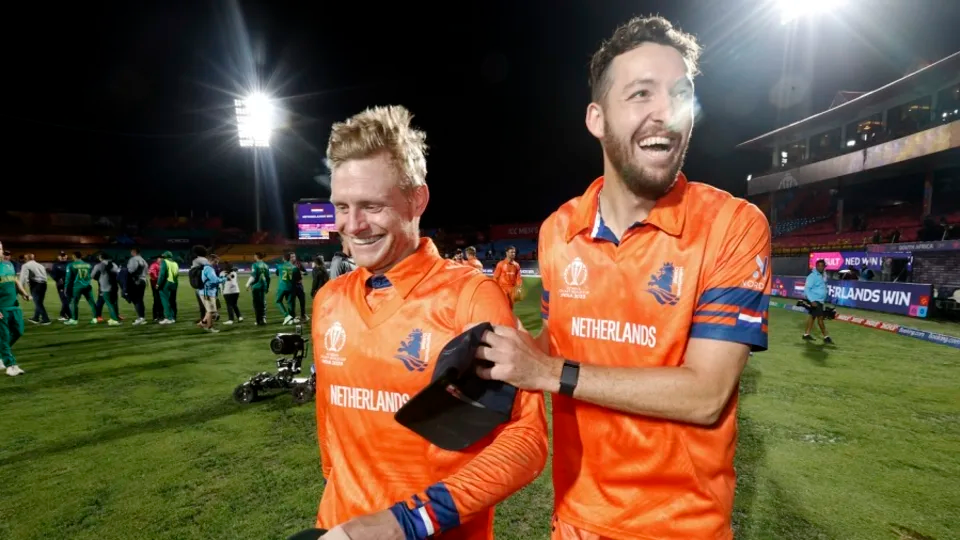
Once is coincidence, twice is a clue, and three times is proof.
To paraphrase Agatha Christie, that is the narrative around South Africa’s meeting with Netherlands at this T20 World Cup.
The Dutch beat South Africa at the 2022 tournament and ended their semi-final hopes in a match where South Africa appeared to be sleep walking, and then beat them again at the 2023 ODI World Cup, where they exposed South Africa’s vulnerability in the chase. If they to do the treble, not only will Netherlands take the lead in Group D, but they will offer conclusive evidence of the threat they pose to Full Members, especially South Africa.
Of course, it will take some doing after South Africa’s opening performance against Sri Lanka, where they reduced their opposition to their lowest T20I total and chased it down in fairly straightforward fashion thanks to the most stable middle-order of their white-ball era. In Aiden Markram, Tristan Stubbs, Heinrich Klaasen and David Miller, South Africa have bankers and big-hitters and, for this match, they also have the advantage of experience. They’ve already played at Eisenhower Park, and have first-hand knowledge that run-scoring doesn’t come easily;Klassen said they are prepared to use their “cricket brains” and play “smarter cricket”.
But the conditions could be good news for Netherlands, who are not naturally a line-up of big hitters and build their innings on a foundation of turning ones into twos. In other words, they tend to take a slightly more conservative approach to batting, which may work well here, but they’ll be wary of the uneven bounce of the surface and will have to come up with plans to counterattack especially against South Africa’s seamers. Their own bowlers were exemplary in Dallas and will look to build on that performance against a line-up that will likely be more proactive than Nepal’s, but who they have managed to keep quiet not once, but twice in the past. Third time’s the charm, they say.
Anrich Nortje’s stunning return to form against Sri Lanka means South Africa may not have to tinker with the bowling combination, and Gerald Coetzee and Tabraiz Shamsi may have to wait their turns to get a game. The batting line-up should be unchanged, with no space for Ryan Rickelton yet.
South Africa: Quinton de Kock (wk), Reeza Hendricks, Aiden Markam, Tristan Stubbs, Heinrich Klaasen (wk), David Miller, Marco Jansen, Keshav Maharaj, Kagiso Rabada, Ottneil Baartman, Anrich Nortje
Conditions in New York may tempt Netherlands to include an extra seamer and they have Kyle Klein in their squad. But it could come at the expense of a shortened batting line-up and they may not want to risk that.
Netherlands: Michael Levitt, Max O’Dowd, Vikramjit Singh, Sybrand Engelbrecht, Scott Edwards (capt, wk), Bas de Leede, Teja Nidamanuru, Logan van Beek, Tim Pringle, Paul van Meekeren, Vivian Kingma
[Cricinfo]
Latest News
Mustafizur, Rishad, Hridoy dazzle in Bangladesh’s tight two-wicket win over Sri Lanka
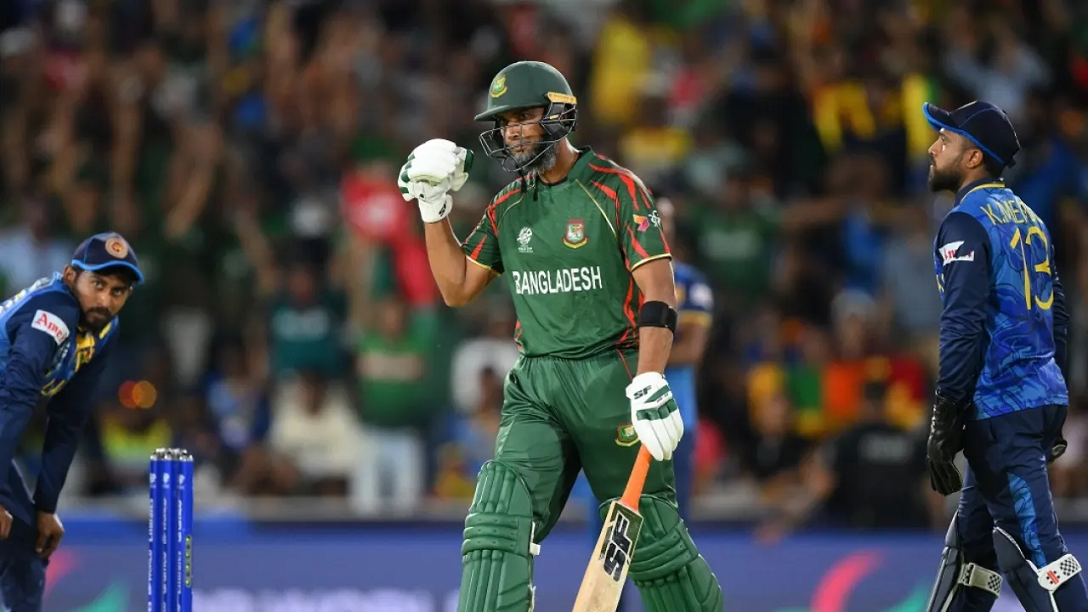
Nuwan Thushara’s last over brought Sri Lanka screaming back into the match,as he first bowled Rishad Hossain, and then nailed Taskin Ahmed in front of the stumps with a pinpoint swinging yorker. This left Bangladesh eight wickets down, with 12 runs still to get.
However, the experienced Mahmudullah was at the crease for Bangladesh, and despite some further nervy moments, pushed Bangladesh across the line off the last ball of the 19th over.
But this was a match chiefly decided by Bangladesh’s own outstanding bowling. Mustafizur Rahman was the best among them, using shorter lengths and his cutters efficiently, to claim figures of 3 for 17. Rishad Hossain’s three-for through the middle overs also kept Sri Lanka quiet.
Mustafizur was instrumental in Sri Lanka’s downward spiral through the middle overs, which culminated in a crash-and-burn end. Ultimately, their inability to find boundaries, or even rotate strike against good Bangladesh bowling resulted in their downfall. A score of 125 for 9 always seemed poor on a decent pitch, even if their bowlers made a match of it in the end.
Brief scores:
Bangladesh 125 for 8 in 19 overs (Towhid Hridoy 40, Litton Das 36; Dhanajaya de Silva 1-11, Nuwan Thushara 4-18, Wanidu Hasaranga 2-32, Matheesha Pathirana 1-27) beat Sri Lanka124 for 9 in 20 overs (Pathum Nissanka 47, Dhananjaya de Silva 21; Tanzim Hasan Sakib 1-24, Taskin Ahmed 2-25, Mustafizur Rahman 3-17, Rishad Hossain 3-22) by two wickets
[Cricinfo]


